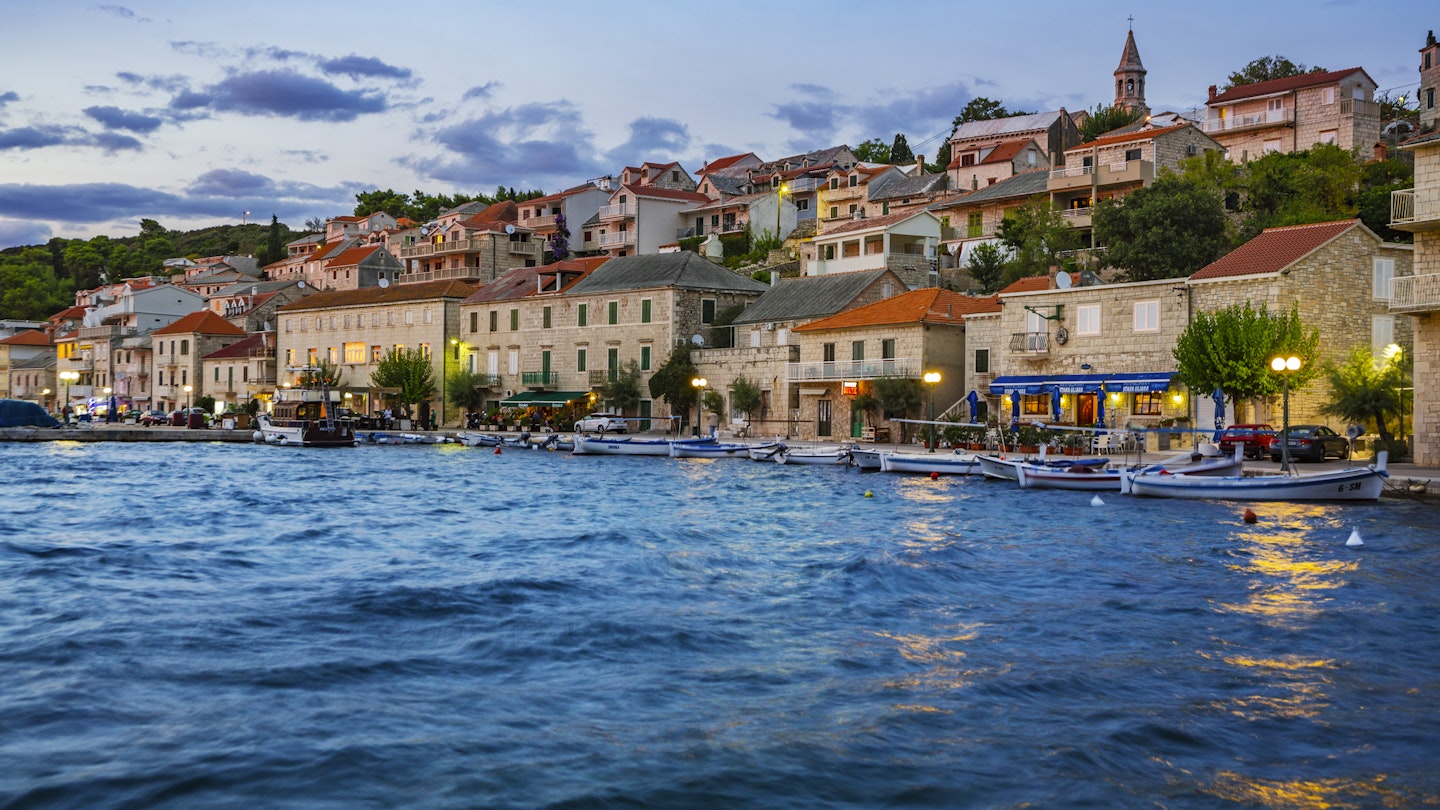Explore the Natural Beauty and Attractions of Brač, Croatia
Brač is one of the stunning islands off the Croatian coast, renowned for its natural beauty and a variety of must-visit attractions that are sure to enthrall visitors.
The island’s coastline boasts beaches of fine white pebbles, while cycling paths and hiking trails crisscross through ancient villages, lush olive groves, and neatly arranged vineyards. Charming fishing villages dot the coast, providing a glimpse into a local way of life that flourishes even after the tourists depart.
Zlatni Rat Beach
Croatia’s most iconic beach, the long, thin, V-shaped Zlatni Rat (Golden Horn), extends into the sea from the island’s south coast. Surrounded by a ring of turquoise water against the brilliant aquamarine of the Adriatic, it looks as magnificent in person as it does on social media platforms. The beach’s unique tail-like shape shifts with the tides and currents, which alters its outline. Additionally, the steady summer breeze on the eastern side attracts windsurfers and kitesurfing enthusiasts.

A delightful one-mile walk along a fragrant coastal path leads to Bol, a quaint port town that comes alive at night. Candles and fairy lights illuminate restaurant patios where finding a table often requires a reservation, especially at popular spots like Konoba Mali Raj, Taverna Riva, and beachside Ribarska Kućica.
Vidova Gora

Standing tall above Zlatni Rat is Vidova Gora, the highest peak in the Adriatic islands at 2552 feet. Reaching the summit requires a challenging two-hour hike from Bol or a strenuous mountain bike ride. Alternatively, visitors can drive to the peak. Whichever option you choose, the reward is breathtaking views of the seascape, the stunning sight of neighboring Hvar island, and a panoramic view of Zlatni Rat beach below.
Blaca Hermitage

West of Vidova Gora, tucked away in a remote ravine, lies the 16th-century Blaca Hermitage. Originally starting as a cave for monks fleeing the Ottomans in 1551, this site transformed over 400 years into a complex of four interconnected white stone buildings that served as the monks’ living quarters and a church.
Incredibly, these monks managed to cultivate olive groves and vineyards in such harsh terrain and exported up to 70,000 liters of wine annually to Venice. Today, the hermitage houses a museum that showcases religious artifacts, astronomical equipment, and even a piano that was transported from Vienna.
Reaching Blaca Hermitage requires a hike along a rocky path, taking approximately 30 minutes. Alternatively, visitors can arrive via boat to Blaca Valley and then make the 30-minute uphill trek.
Olive Oil Museum in Škrip
The olive tree symbolizes Brač with its long-standing history of olive cultivation. Over one million olive trees cover the island, with many local producers achieving international acclaim for their high-quality extra virgin olive oil.
Visitors can learn about the history of olive production and the traditional pressing process at the Olive Oil Museum in Škrip, the island’s oldest village. Situated in a restored 19th-century olive mill, the museum features a large stone press and traditional tools that were used before modern machinery took over.

Don’t miss the opportunity to sample the family’s award-winning extra virgin olive oil. For those with a culinary curiosity, a tasting menu is available with local delicacies such as fig and bitter orange jams, Brač cheese, Dalmatian cured ham, and local red wine.
Pučišća Stonemasonry School
Another prominent natural resource that Brač is known for is limestone, which has been quarried since Roman times. The Romans and Venetians utilized Brač limestone to construct many notable architectural landmarks, including Diocletian’s Palace in Split, St. James’ Cathedral in Šibenik, and St. Lawrence’s Cathedral in Trogir, all of which are UNESCO World Heritage sites.
In 1906, the picturesque town of Pučišća, located along a peaceful inlet on Brač’s north coast, was selected as the site for a stonemasonry training center. In 1956, the Klesarska Škola Pučišća (Stonemasonry School of Pučišća) opened its doors. Visitors can follow the melodic sounds of chisels striking stone to a beautifully designed building made of white Brač stone, where students practice using only traditional hand tools. A luminous exhibition room showcases prominent works created by the students from the island’s signature stone.
The Fishing Villages of Milna, Sutivan, Splitska, and Postira

To experience the essence of island life and embrace the laid-back atmosphere of Dalmatia, visiting Brač’s cozy fishing villages is essential. Milna, located on the west coast, features a charming horseshoe-shaped harbor, perfect for enjoying breakfast at a seafront café while watching fishermen return with their catch.
Further northwest is lovely Sutivan, a compact town filled with historic stone houses and vibrant flower gardens. A similar serene ambiance can be found in Splitska and Postira, which are connected by a coastal walking path. Along this path, idyllic beaches lure sunbathers, providing the perfect setting to absorb the Mediterranean island atmosphere.





